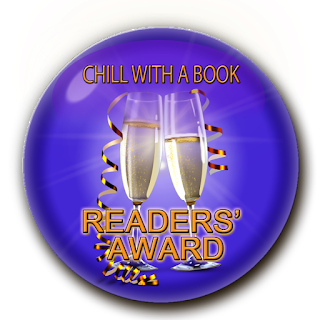"A Clever Approach to Writing and Editing" by Steven Neil
- DK Marley
- Dec 21, 2021
- 4 min read
Updated: Sep 4, 2022

Guest Post from Steven Neil, the author of THE MEREST LOSS
A story of love and political intrigue, set against the backdrop of the English hunting shires and the streets of Victorian London and post-revolutionary Paris.
Writing and Editing the novel; using checklists.
In this post I reveal my approach to drafting and editing, developed during the time I was studying for my Masters in Creative Writing.
Writing the Novel
I write straight on to a PC, sometimes using Dragon voice recognition. I write fast and rarely stop to edit, in the conventional sense, as I go. I’m a planner and I know how the story will end, before I start writing. When I was drafting The Merest Loss, I created all thirty-six chapters, sequentially, by date, in a file. Bear in mind, though, that I had already been researching the characters and the storyline for nearly two years, so this won’t work for everyone. Most of the chapters already had titles, before any words came. However, I didn’t write sequentially. I moved back and forth along the timeline, sometimes adding several paragraphs, sometimes only a few words. My first draft was virtually complete, before I engaged in significant editing. Having said that, I used a checklist of writing guidelines to shape my drafting, and in this way I was building in a sort of pre-editing as I went. This is what I mean:
WRITING GUIDELINES (for each chapter)
Describe the setting.
Describe the sights, sounds smells.
Describe the prevailing mood e.g. melancholy, grey, optimistic.
Show rather than tell.
Describe the action.
Introduce the key players.
What do they look like?
What are they thinking?
What are they saying?
Use dialogue.
Introduce an original simile or metaphor.
Maintain consistent tense.
Maintain consistent perspective e.g. first person.
Move the story along.
Evoke some emotion in the reader.
Use humour.
Use original adjectives and adverbs but limit the number.
Write simple sentences.
Join up sentences to vary sentence length.
Maintain a consistent voice.
Read the text aloud.
Ensure a rhythm to the chapter.
End with a question a mystery or a reason to read on.
Editing the Novel
I find the more the editing is separated from the first draft the better the second draft is. I think I need to be in a different, critical mindset when editing. As Hemingway is reputed to have said, ‘Write drunk, edit sober.’ I always edit by chapter. I try to write so that each chapter is a little story of its own. I limit my chapters to no more than 2500 words. My logic is that when I am reading in bed at night, if I get tired, I look to see how many pages until the end of the chapter. If there are only a few pages, I read on. If there are a lot, I put the bookmark in. In my novel, you are never more than a few pages away from chapter end.
Here is the checklist I used when editing The Merest Loss. Feel free to use the checklists as templates for your own checklists and add and subtract as you see fit. I hope it may help some writers out there to create and fine tune their own drafts.
WRITING CHECKLIST (for each chapter)
Is there enough sight, sound and smell?
Can the reader see what I am describing?
Is there enough movement, action?
Is there humour?
Has emotion been evoked? What will the reader feel?
Has the reader’s attention been captured?
Is the writing elegant, simple?
Have I put in things the reader will skip?
Is there fascination?
Are the adjectives, adverbs interesting? Are there too many?
Is the tense consistent?
Is the perspective consistent?
Is the voice consistent?
Are the verbs interesting enough?
Is the writing grammatical?
Is the punctuation correct?
Are the paragraph breaks appropriate?
Is there enough plot development?
Is there enough mystery?
Is the use of qualifiers and intensifiers appropriate and limited?
Is the reader captivated?
Does the reader think what I want them to think? Is there room for confusion?
Do the speech patterns reflect the person and the milieu?
How does it sound when read aloud?
Is there at least one compelling simile or metaphor?
Is there anything that could be seen as cliché?
Is any of the writing laboured or awkward?
Is the sentence length varied?
Is there any telling that could be shown instead?
Is the back-story necessary and well integrated?
Is there enough pace? Is it too slow or too fast?
Is there tension?
Are any words out of place e.g. too modern?
Is there character development i.e. does the reader learn something about a character that is new?
Is there plot development i.e. is there a new clue or piece of information?
Is there enough dialogue? Is it the best way to advance the story?
Can any words be taken out?
Is there at least one compelling phrase or image with a poetic element?
Is it credible, believable?
Is there too much name repetition?
Is the dialogue separated from the description?
Is it authentic?
Does it feel true?
What is resolved?
What is still to be resolved?
Will the reader want to read on?
© Steven Neil

THE MEREST LOSS is available worldwide in paperback and eBook, including the UK, US, France, Australia and Canada.
Follow Steven Neil on https://twitter.com/stevenneil12 for more information.
Some Amazon reviews for The Merest Loss:
Historical fiction is not normally my preferred genre, but in this beautifully written story, author Steven Neil transported me back into Victorian England and France so completely that I could have been riding on each character’s shoulder; seeing, feeling, hearing, and tasting every scene each character was immersed in.
In one day, I started and finished this novel because I just could not put it down! I loved everything about it - the story, the writing style, simply everything! It was if I was reading a classic novel like Bronte or Hugo - so many elements weaved into the writing with nods to Thackeray’s Becky Sharp in Vanity Fair or Hugo's French history in Les Miserables or the political intrigue in Tolstoy's War and Peace.












Comments